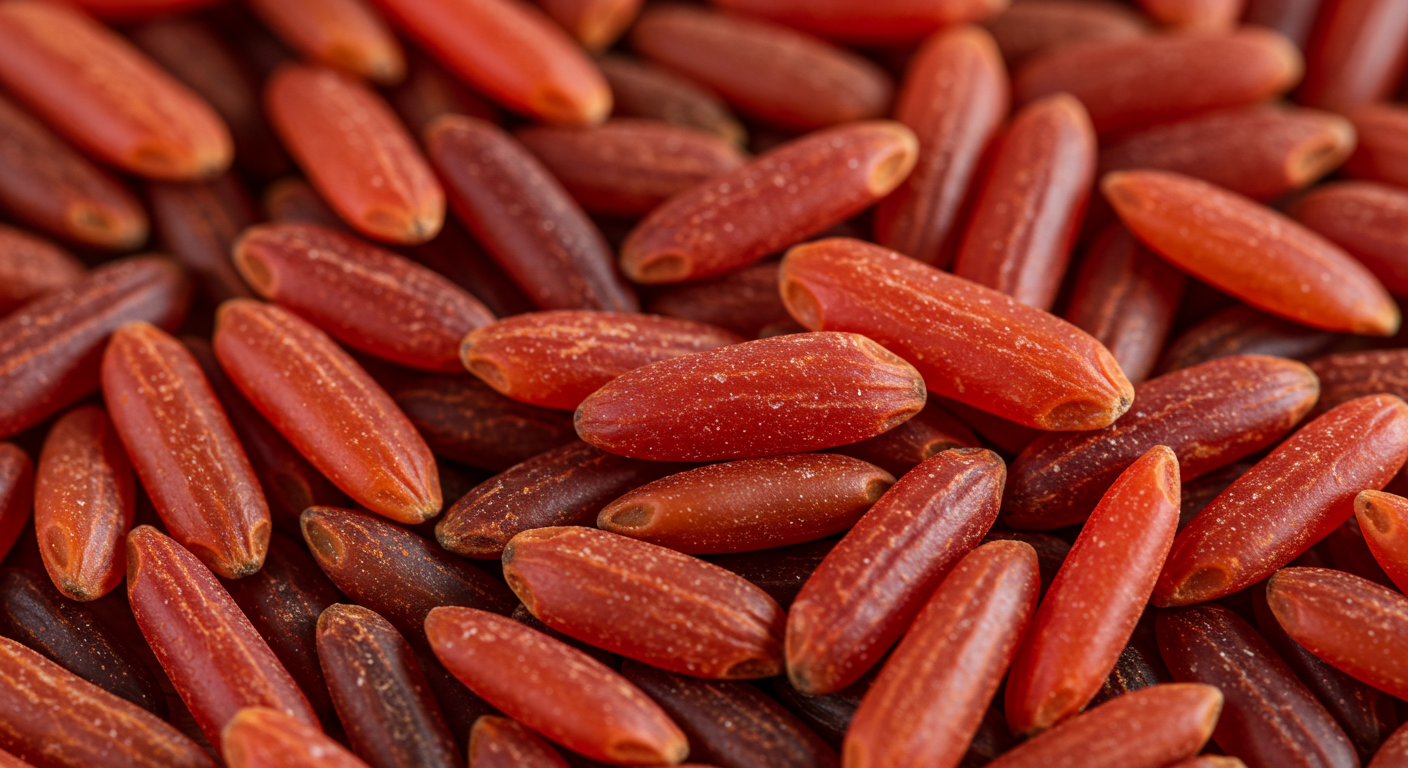Dr. Kumar’s Take:
A large review of 30 clinical trials suggests that red yeast rice (RYR) may reduce the risk of heart attacks and death in people with metabolic syndrome—a group of conditions that raise the risk of heart disease, diabetes, and stroke. This natural supplement, commonly used in Chinese medicine, appears to improve blood sugar, cholesterol, and blood pressure without increasing side effects. Still, most of the data come from studies in China and vary in quality, so caution is warranted. For those who cannot tolerate statins, RYR might offer a gentle alternative—but it’s important to talk with your doctor first.
Key Takeaways:
✔ Red yeast rice reduced the risk of cardiovascular death and events.
✔ Improved blood sugar, insulin resistance, cholesterol, and blood pressure.
✔ No increase in side effects was found.
✔ Most benefits were more noticeable in middle-aged patients and women.
✔ Long-term safety and effectiveness still require more high-quality studies.
Brief Summary:
This meta-analysis of 30 randomized controlled trials, including over 5,400 participants, assessed the effectiveness and safety of red yeast rice preparations in reducing mortality, cardiovascular events, and metabolic risk factors. Participants had metabolic syndrome or related conditions. The review found that RYR significantly reduced:
- All-cause mortality
- Major cardiovascular events (heart attack, stroke)
- Fasting glucose, Hemoglobin A1c, and insulin resistance
- Total cholesterol, LDL, and triglycerides
- Mean arterial blood pressure
No significant increase in side effects was found compared to placebo or standard treatments.
Study Design:
This was a systematic review and meta-analysis of 30 randomized controlled trials (RCTs) involving 5,440 participants, most from China. Studies compared red yeast rice preparations (like Xuezhikang) to placebo, standard treatment, or used RYR alongside conventional therapies. Outcomes included mortality, major cardiovascular events (MACEs), blood glucose, cholesterol, blood pressure, and adverse reactions.
Results:
✔ Death from any cause was reduced by 38% in people taking red yeast rice (RR = 0.62)
✔ Major heart problems (like heart attacks and strokes) were reduced by 46% (RR = 0.54)
What does that mean in real terms?
✅ Absolute Risk Reduction for death: about 2.5%
This means about 2 or 3 FEWER people out of every 100 died when taking red yeast rice compared to those taking a placebo.
✅ Absolute Risk Reduction for heart problems (MACEs): about 4.1%
This means about 4 FEWER people out of every 100 had a major heart event when taking red yeast rice compared to those taking a placebo.
✅ Number Needed to Treat (NNT) for death: ~42
You’d need to treat 42 people with red yeast rice to prevent 1 death.
✅ Number Needed to Treat for major heart events: ~24
You’d need to treat 24 people to prevent 1 serious heart event like a heart attack or stroke.
Other Health Improvements:
✔ Fasting blood sugar went down by 0.46 mmol/L
✔ HbA1c (a measure of blood sugar control) dropped by 0.49
✔ LDL (“bad” cholesterol) dropped by 0.42 mmol/L
✔ HDL (“good” cholesterol) increased by 0.14 mmol/L
✔ Mean arterial blood pressure dropped by 3.8 mmHg
No significant increase in side effects compared to control (RR = 1.00).
How Red Yeast Rice Works
Red yeast rice is made by fermenting rice with the Monascus purpureus yeast. It naturally contains monacolin K, a substance chemically identical to lovastatin, a prescription cholesterol-lowering drug. Monacolin K blocks the enzyme HMG-CoA reductase, reducing cholesterol production in the liver.
In addition to cholesterol effects, red yeast rice may improve insulin sensitivity, reduce oxidative stress, and improve blood vessel function. These effects may explain its ability to improve metabolic markers beyond just cholesterol.
Interestingly, some people who experience muscle pain or other side effects from prescription statins report better tolerance when using red yeast rice. The reasons aren’t fully understood, but it may be due to the lower and more gradual dosing, the presence of other natural compounds in the fermented product, or differences in how it’s absorbed and metabolized. That said, monacolin K is still a statin, and the potential for side effects—including serious ones—remains, especially when doses are not standardized.
Red Yeast Rice Can Be Helpful—But Choose Your Supplement Wisely
A recent event in Japan highlights the importance of caution when using red yeast rice (RYR) supplements. Several people developed serious kidney injuries, including Fanconi syndrome, after taking contaminated RYR tablets. In this case, the contamination wasn’t from the usual suspect, citrinin—a well-known kidney toxin—but from another compound called puberulic acid, likely produced by a mold (Penicillium adametzioides) during manufacturing. Some patients required dialysis, and at least one death has been reported.
This incident is a reminder that no supplement or drug is without risk. Red yeast rice lowers cholesterol because it naturally contains monacolin K, which is chemically identical to lovastatin—a statin drug originally derived from fungi. Like all statins, it’s essentially a fungal toxin that inhibits cholesterol production in the liver.
So while RYR can be effective, it’s still delivering a bioactive compound with real pharmacologic effects—and real potential for harm, especially if contaminated. Always source supplements from reputable manufacturers, and talk to your doctor before starting them.
You can read more about the Japan incident here.
Related Studies and Research
Plant Sterols, Cholesterol, and Heart Health – Reviews how plant sterols impact cholesterol levels and their potential role in heart disease prevention.
Ezetimibe and Heart Disease: A Review – Examines how ezetimibe lowers LDL cholesterol and its effect on cardiovascular outcomes.
Fibrates and Cardiovascular Risk Reduction – Explores the role of fibrates in lipid management and their effect on heart disease risk.
CETP Inhibitors and Cardiovascular Outcomes – Reviews studies on CETP inhibitors and their effect on HDL levels and cardiovascular risk.
ApoB vs. LDL Cholesterol: Which is the Better Risk Marker? – Compares ApoB and LDL-C as predictors of cardiovascular disease.
Statins: Effectiveness and Safety Review – Analyzes the benefits and potential side effects of statin therapy for cardiovascular prevention.
Frequently Asked Questions
Is red yeast rice safe?
In this analysis, red yeast rice was well tolerated with no increase in side effects. However, some RYR products contain citrinin or puberulic acid, a potentially harmful byproduct. Always choose brands tested for purity and quality.
Is it as effective as a statin?
RYR can be effective in lowering cholesterol and improving heart health, especially for those who can’t take statins. But it may be slightly less potent, and doses can vary by brand.
Can I use RYR instead of a prescription?
Do not stop your medications without medical advice. RYR may help some people, but it should be discussed with your doctor, especially if you are already on cholesterol or diabetes medications.
How long does it take to work?
Improvements in blood markers were seen in trials as short as 1 month, but most trials lasted 3–12 months. Benefits seem to grow over time.
Conclusion
Red yeast rice appears to be a promising natural therapy for improving several risk factors in metabolic syndrome. It may reduce death and heart attacks, lower blood sugar and cholesterol, and help blood pressure. However, because of variability in product quality and limited high-quality studies outside China, you should use caution, perform due diligence, and talk to your doctor before using it.
For people looking for a more natural way to address metabolic health—especially if they are sensitive to statins—red yeast rice may be worth discussing with a healthcare provider.


